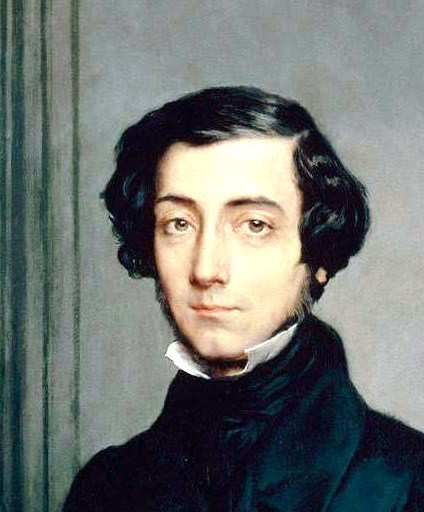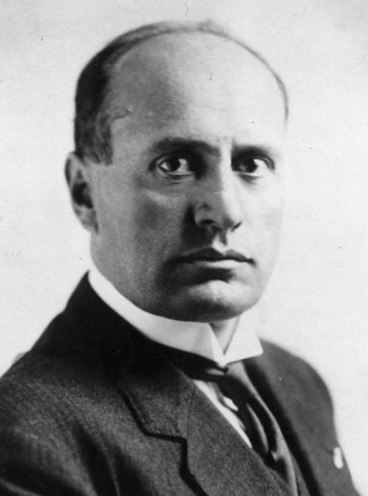|
Italian Liberal Party (1943)
The Italian Liberal Party ( it, Partito Liberale Italiano, PLI) was a liberal and conservative political party in Italy. The PLI, which is the heir of the liberal currents of both the Historical Right and the Historical Left, was a minor party after World War II, but also a frequent junior party in government, especially since 1979. The party disintegrated in 1994 following the fallout of the Tangentopoli corruption scandal, succeeded by several minor parties. History Origins The origins of liberalism in Italy are in the Historical Right, a parliamentary group formed by Camillo Benso di Cavour in the Parliament of the Kingdom of Sardinia following the 1848 revolution. The group was moderately conservative and supported centralised government, restricted suffrage, regressive taxation, and free trade. They dominated politics following Italian unification in 1861 but never formed a party, basing their power on census suffrage and a first-past-the-post voting system. The Right ... [...More Info...] [...Related Items...] OR: [Wikipedia] [Google] [Baidu] |
Liberal Union (Italy)
The Liberal Union ( it, Unione Liberale), simply and collectively called Liberals ( it, Liberali), was a political alliance formed in the first years of the 20th century by the Italian Prime Minister and leader of the Historical Left Giovanni Giolitti. The alliance was formed when the Left and the Right merged in a single centrist and liberal coalition which largely dominated the Italian Parliament. History The origins of liberalism in Italy are in the Historical Right, a parliamentary group formed by Camillo Benso, Count of Cavour in the Parliament of the Kingdom of Sardinia following the 1848 revolution. The group was moderately conservative and supported centralised government, restricted suffrage, regressive taxation and free trade. They dominated politics following Italian unification in 1861, but never formed a party, basing their power on census suffrage and first-past-the-post voting system. The Right was opposed by the more progressive Historical Left, which overthre ... [...More Info...] [...Related Items...] OR: [Wikipedia] [Google] [Baidu] |
Conservative Liberalism
Conservative liberalism or right-liberalism is a variant of liberalism, combining liberal values and policies with conservative stances, or simply representing the right-wing of the liberal movement. M. Gallagher, M. Laver and P. Mair, ''Representative Government in Europe'', p. 221. In the case of modern "conservative liberalism", scholars sometimes see it as a more positive and less radical variant of classical liberalism, but it is also referred to as an individual tradition that distinguishes it from classical liberalism and social liberalism. Conservative liberal parties tend to combine economically liberal policies with more traditional stances and personal beliefs on social and ethical issues. In general, liberal conservatism and conservative liberalism have different philosophical roots. Historically, " liberal conservatism" refers mainly to the case where conservatives embrace the elements of classical liberalism, and "conservative liberalism" refers to classical li ... [...More Info...] [...Related Items...] OR: [Wikipedia] [Google] [Baidu] |
Pentapartito
The Pentapartito (from Greek , "five", and Italian , "party"), commonly shortened to CAF (from the initials of Craxi, Andreotti and Forlani), refers to the coalition government of five Italian political parties that formed between June 1981 and April 1991. The coalition comprised the Christian Democracy (DC), the Italian Socialist Party (PSI), Italian Democratic Socialist Party (PSDI), Italian Liberal Party (PLI) and Italian Republican Party (PRI). History The new majority The Pentapartito began in 1981 at a meeting of the Congress of the Italian Socialist Party (PSI) when the Christian Democrat Arnaldo Forlani and Socialist Secretary Bettino Craxi signed an agreement with the blessing of Giulio Andreotti. As the agreement was signed in a trailer, it was called the "pact of the camper." The pact was also called "CAF" for the initials of the signers, Craxi-Andreotti-Forlani. With this agreement, the DC party recognized the equal dignity of the so-called "secular parties" of t ... [...More Info...] [...Related Items...] OR: [Wikipedia] [Google] [Baidu] |
Centrism (Italy)
The Centrism ( it, Centrismo) was a political formula that inspired the centrist governments of the Italian Republic between the end of the 1940s and the early 1950s. The governments of this period, also known as "The Years of Centrism" (''Gli Anni del Centrismo''), were characterized by a coalition pact between the Christian Democracy and the other minor secular parties. History The general elections in April 1948 were heavily influenced by the cold-war confrontation between the Soviet Union and the United States. After the Soviet-inspired February 1948 communist coup in Czechoslovakia, the US became alarmed about Soviet intentions and feared that, if the leftist coalition were to win the elections, the Soviet-funded Italian Communist Party (PCI) would draw Italy into the Soviet Union's sphere of influence. The Christian Democrat campaign claimed that, in communist countries, "children send parents to jail", "children are owned by the state", "people eat their own children", ... [...More Info...] [...Related Items...] OR: [Wikipedia] [Google] [Baidu] |
National Bloc (Italy, 1948)
The National Bloc ( it, Blocco Nazionale) was a right-wing electoral alliance formed for the 1948 Italian general election by the Italian Liberal Party and the Common Man's Front. History The alliance scored a poor 3.8% in the election for the House, gaining 16 seats, while a 5.4% was reached for the Senate where the single-man constituencies and the age-restricted suffrage gave an advantage to this list formed by old pre-fascist politicians. The list generally suffered the concurrence of Christian Democracy, which was seen by centrist and right-wing electors as the sole shield against the Soviet-aligned Popular Democratic Front. The alliance soon disappeared, leaving only as a party with some electoral support. Composition It was composed of the following political parties A political party is an organization that coordinates candidates to compete in a particular country's elections. It is common for the members of a party to hold similar ideas about politics, and parti ... [...More Info...] [...Related Items...] OR: [Wikipedia] [Google] [Baidu] |
National Democratic Union (Italy)
The National Democratic Union ( it, Unione Democratica Nazionale, UDN) was a political alliance of parties for the 1946 general election, formed by the Italian Liberal Party, the Labour Democratic Party and some other liberal, conservative and monarchist clubs. Its symbol was an Italian flag overcome by a shining star. History The party scored 6.8%, placing itself at the fourth place in the election. This grouping, during the sessions of the Constituent Assembly, represented the continuation of the Liberal elite, which governed Italy from the years of Giovanni Giolitti until the rise of Benito Mussolini and the instauration of the Fascist regime. Important politicians elected on the UDN lists were Vittorio Emanuele Orlando, Francesco Saverio Nitti, Luigi Einaudi, Benedetto Croce, Enrico De Nicola, Gaetano Martino, Giuseppe Paratore, Ivanoe Bonomi, Raffaele De Caro, Meuccio Ruini, Enrico Molè, Bruno Villabruna, Epicarmo Corbino and Aldo Bozzi. The alliance was succeeded in t ... [...More Info...] [...Related Items...] OR: [Wikipedia] [Google] [Baidu] |
National Liberation Committee
The National Liberation Committee ( it, Comitato di Liberazione Nazionale, CLN) was a political umbrella organization and the main representative of the Italian resistance movement fighting against Nazi Germany’s forces during the German occupation of Italy in the aftermath of the armistice of Cassibile, while simultaneously fighting against Italian Fascists during the Italian Civil War. It was a multi-party entity, whose members were united by their anti-fascism. The CLN coordinated and directed the Italian resistance and was subdivided into the Central Committee for National Liberation (CCLN) based in Rome and the later National Liberation Committee for Northern Italy (CLNAI) based in Milan. History The CLN was formed on 9 September 1943, following Italy's armistice and Germany's invasion of the country. The member parties were the Italian Communist Party, the Italian Socialist Party, the Action Party, the Christian Democracy, the Labour Democratic Party, and the Italia ... [...More Info...] [...Related Items...] OR: [Wikipedia] [Google] [Baidu] |
National List (Italy)
The National List ( it, Lista Nazionale) also known as ''Listone'' (literally "Big List") was a Fascist and nationalist coalition of political parties in Italy established for the 1924 general election, and led by Benito Mussolini, Prime Minister of Italy and leader of the National Fascist Party. Nohlen, D & Stöver, P (2010) ''Elections in Europe: A data handbook'', p1047 History Background In the night between 27 and 28 October 1922, about 30,000 Fascist blackshirts gathered in Rome to demand the resignation of liberal Prime Minister Luigi Facta and the appointment of a new Fascist government with Benito Mussolini at its head. On the morning of 28 October, King Victor Emmanuel III, who according to the Albertine Statute held the supreme military power, refused the government request to declare martial law, which led to Facta's resignation. The King then handed over power to Mussolini (who stayed in his headquarters in Milan during the talks) by asking him to form a new governm ... [...More Info...] [...Related Items...] OR: [Wikipedia] [Google] [Baidu] |
National Bloc (Italy, 1921)
The National Bloc ( it, Blocco Nazionale) was a right-wing coalition of political parties in Italy formed for the 1921 general election. History The National Bloc incorporated the electoral list of the former Prime Minister , the led by |
Centre-right Politics
Centre-right politics lean to the right of the political spectrum, but are closer to the centre. From the 1780s to the 1880s, there was a shift in the Western world of social class structure and the economy, moving away from the nobility and mercantilism, towards capitalism. This general economic shift toward capitalism affected centre-right movements, such as the Conservative Party of the United Kingdom, which responded by becoming supportive of capitalism. The International Democrat Union is an alliance of centre-right (as well as some further right-wing) political parties – including the UK Conservative Party, the Conservative Party of Canada, the Republican Party of the United States, the Liberal Party of Australia, the New Zealand National Party and Christian democratic parties – which declares commitment to human rights as well as economic development. Ideologies characterised as centre-right include liberal conservatism and some variants of liberalism and Chri ... [...More Info...] [...Related Items...] OR: [Wikipedia] [Google] [Baidu] |
Centrism
Centrism is a political outlook or position involving acceptance or support of a balance of social equality and a degree of social hierarchy while opposing political changes that would result in a significant shift of society strongly to the left or the right. Both centre-left and centre-right politics involve a general association with centrism that is combined with leaning somewhat to their respective sides of the left–right political spectrum. Various political ideologies, such as Christian democracy, Pancasila, and certain forms of liberalism like social liberalism, can be classified as centrist, as can the Third Way, a modern political movement that attempts to reconcile right-wing and left-wing politics by advocating for a synthesis of centre-right economic platforms with centre-left social policies. Usage by political parties by country Australia There have been centrists on both sides of politics who serve alongside the various factions within the Liberal and L ... [...More Info...] [...Related Items...] OR: [Wikipedia] [Google] [Baidu] |
Conservatism
Conservatism is a cultural, social, and political philosophy that seeks to promote and to preserve traditional institutions, practices, and values. The central tenets of conservatism may vary in relation to the culture and civilization in which it appears. In Western culture, conservatives seek to preserve a range of institutions such as organized religion, parliamentary government, and property rights. Conservatives tend to favor institutions and practices that guarantee stability and evolved gradually. Adherents of conservatism often oppose modernism and seek a return to traditional values, though different groups of conservatives may choose different traditional values to preserve. The first established use of the term in a political context originated in 1818 with François-René de Chateaubriand during the period of Bourbon Restoration that sought to roll back the policies of the French Revolution. Historically associated with right-wing politics, the term ha ... [...More Info...] [...Related Items...] OR: [Wikipedia] [Google] [Baidu] |






